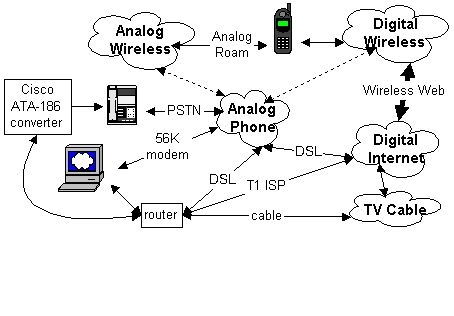A review data or excercise about the historical backdrop of the cell telephone or wireless and the related cell information transfers frameworks.
 The improvement and history of the cell telephone has seen countless since the first Pdas were presented. It was just toward the start of the 1980s when cell telephone engineering began to be sent economically. From that point forward there have been a lot of people new mobile phone or cellular telephone frameworks presented, and numerous changes have been made in this manifestation of radio correspondences innovation. The cell telephones themselves and the related supplies including base stations and the other system gear and cell innovation has ended up much less expensive and far more diminutive.
The improvement and history of the cell telephone has seen countless since the first Pdas were presented. It was just toward the start of the 1980s when cell telephone engineering began to be sent economically. From that point forward there have been a lot of people new mobile phone or cellular telephone frameworks presented, and numerous changes have been made in this manifestation of radio correspondences innovation. The cell telephones themselves and the related supplies including base stations and the other system gear and cell innovation has ended up much less expensive and far more diminutive.
One of the real changes is the level of business entrance that has been attained. Cell engineering has empowered numerous individuals to have telephones where it would not generally be conceivable. In numerous nations there are more cellular telephone accounts than individuals, i.e. numerous individuals have more than one record, potentially one for private utilization and one for work. Thusly cell engineering has empowered business sector entrance to wind up more than 100%.
With the advancement of cell innovation, cellular telephones now have a lot of people a larger number of offices and capacities than the first ones to be sold. Cellular telephone history will demonstrate a consistent increment in the capacities of these telephones.

Cellular telephone history review
The telephones themselves have experienced numerous changes amid their history. Cell innovation that has been utilized has enhanced drastically. The principal frameworks to be dispatched were focused around simple innovation. The early telephones were expansive and could surely not be set in a pocket like the telephones of today.
The original (1g) telephone frameworks as they are presently known were surpassed in the early 1990s by the first computerized frameworks.
The abnormal amounts of utilization and constrained recurrence distribution implied that more noteworthy range use proficiency was required. Appropriately the following or second-era (2g) telephone frameworks were acquainted with meet this need.
As the utilization of telephones expanded and individuals got to be more versatile, new potential outcomes developed for utilizing the telephones for information exchange. They could be utilized to download data from the Internet, or to send feature. The main stage in this movement was to give a medium rate information exchange capacity. These frameworks were in like manner known as 2.5g.
However a definitive point was to give a moderately fast information exchange capacity. These full third era (3g) frameworks took more time to create and take off than had been initially foreseen as a consequence of higher improvement expenses and a downturn in the worldwide economy. Nonetheless they find themselves able to give a critical change in capacity over the 2.5 G frameworks
Simple Systems
There was a huge mixture of original frameworks that were presented. A great part of the early improvement of cell frameworks had been attempted in the USA, however the first completely business framework to be dispatched was the Nordic Mobile Telephone (NMT) framework. Soon after this a framework known as the Advanced Mobile Phone System (AMPS) was propelled financially. This was created principally by Bell and was presented in the USA albeit numerous different nations utilized this framework later. A further framework known as Total Access Communication System (TACS) created by Motorola was presented in the UK and numerous different nations.
These were the primary frameworks that were created, in spite of the fact that around the globe numerous variations were produced to suit the needs of the individual nations.
Despite the fact that there were contrasts in the particulars of the frameworks, they were all very much alike in idea. The voice data was carried on a recurrence adjusted bearer. A control channel was additionally used to empower the versatile to be steered to a suitable empty channel. The channel dispersing for every framework was distinctive. NMT utilized a 12.5 khz channel dividing, AMPS, a 30 khz dispersing and TACS a 25 khz separating. A later improvement of AMPS called NAMPS or narrowband AMPS utilized a 10 khz channel separating to monitor range.
Computerized Systems
The simple frameworks were extremely fruitful, yet their exceptionally achievement began to demonstrate some of their inadequacies. The primary one was the wasteful route in which they sued the range. With the development rates that were being seen, there was inadequate range to backing the nature of administration that was needed. By changing over to a computerized framework, impressive funds could be made. Various frameworks emerged from this activity. These second-era frameworks as they were termed, begun to be conveyed in the early 1990s and their history is generally as surprising.

The framework that was created in Europe was the consequence of 26 information transfers organizations cooperating. Work really began in 1982, and the take off initiated in 1991. The framework known by the letters GSM was initially called Groupe Speciale Mobile yet this was later changed to Global System for Mobile interchanges in perspective of the wide inclusion in its improvement. It utilized time division different access (TDMA) to permit up to eight clients to utilize each of the channels that are divided 200 khz separated. The essential framework utilized frequencies as a part of the 900 Mhz band, however different groups in the 1800 and 1900 Mhz (USA) groups were included. New groups in the 850 Mhz area were additionally included.
In the USA a framework uniquely intended to work close by their AMPS framework was concocted. The framework was known under a mixed bag of names including Digital AMPS or DAMPS, and US Digital Cellular (USDC), in spite of the fact that it is typically referred to pretty much as TDMA today as it depends on TDMA innovation. The framework was initially characterized under standard number IS-54, in spite of the fact that this was later upgraded to IS-136 and it utilizes a 30 khz channel separating to make it good with the current AMPS frameworks in operation.
An alternate advancement in the USA from Qualcomm as well



